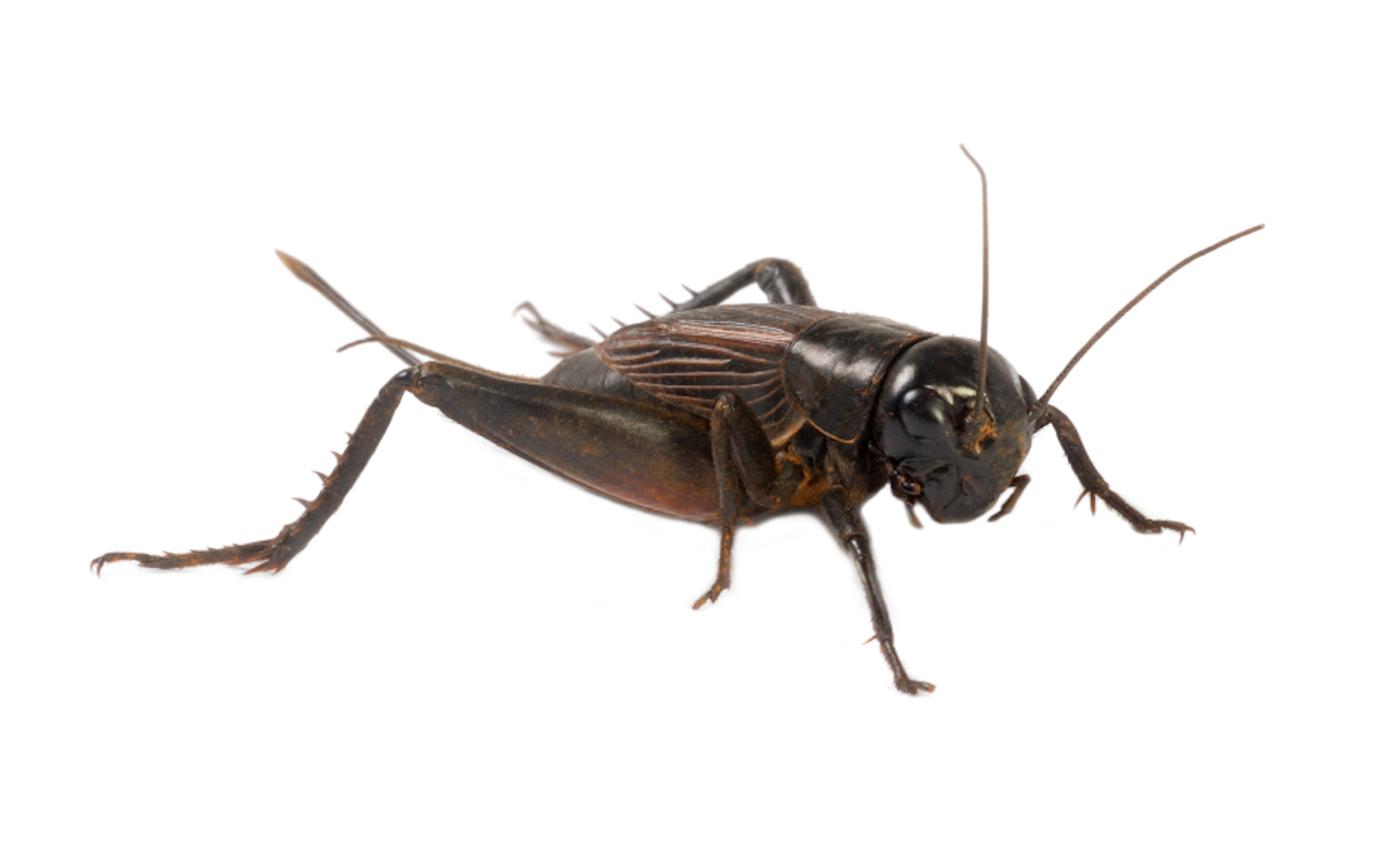How To Get A Cricket To Stop Chirping
House Crickets
Acheta Domesticus (Linnaeus)
House Crickets Identification
Pest Stats
Color
Yellowish brown with 3 dark cross bands on head
Size
3/4 – 7/8" (16-22 mm)
What Do House Crickets Look Like?
Adult house crickets are light yellowish brown in color with three dark crossbands on their head. They are about 3/4 – 7/8 inch in length and have a threadlike antennae that is often longer than its body, and wings that lie flat on its back. Nymphs are wingless but otherwise look similar to adults.
Signs of an Infestation
The most obvious sign of a house cricket infestation is the presence of crickets in the home. They are drawn to warm, moist environments within structures. Another sign of a cricket infestation is the chirping noise the male house crickets often make, which is done when they rub their front wings together. This "calling song" serves to attract females and, since they're nocturnal, often occurs at night. If homeowners hear this chirping, it could be a sign of a house cricket infestation. Chewed fabric is also a sign of a house cricket infestation. Mandible marks along chewed edges are often visible with magnification. These marks are much less than 1 mm wide.
House Crickets Prevention
Find a Pest Control Professional
What Do House Crickets Eat?
Outside, house crickets feed on plants and dead or live insects, including other crickets. Indoors, they can feast on fabric, including clothing and carpet. Wool, cotton, silk and synthetic fabrics as well as clothes soiled with perspiration are especially attractive to house crickets.

House Crickets Education
Habitat
House crickets typically live outdoors during the warmer seasons and are especially fond of garbage dumps. They are often attracted to electric lights in larger numbers, sometimes by the thousands, and rest on vertical surfaces such as light poles and house walls. However, when cold weather approaches, they will move indoors to houses and sheds because of the moisture and warmth they provide.
Habits
House crickets are nocturnal or active at night and usually hide in dark warm places during the day. During warm weather months, house crickets typically live outdoors and are especially fond of garbage dumps. They are often attracted to electric lights in larger numbers, sometimes by the thousands, and rest on vertical surfaces such as light poles and house walls. However, when cold weather approaches, they seek shelter in houses and sheds because of the moisture and warmth they provide.
Threats
While house crickets don't post a health risk to humans, they can cause damage to property, specifically clothing, carpets and areas covered in fabric. Favorite fabrics include wool, cotton, silk and synthetics. As house crickets typically surface feed, they leave the area roughened from pulling the fibers loose while eating. In the case of a heavy infestation, large areas of fabric may be eaten out. This is why it's important to get rid of crickets as soon as possible.
How To Get A Cricket To Stop Chirping
Source: https://www.pestworld.org/pest-guide/occasional-invaders/house-crickets/
Posted by: rodriguenother44.blogspot.com

0 Response to "How To Get A Cricket To Stop Chirping"
Post a Comment